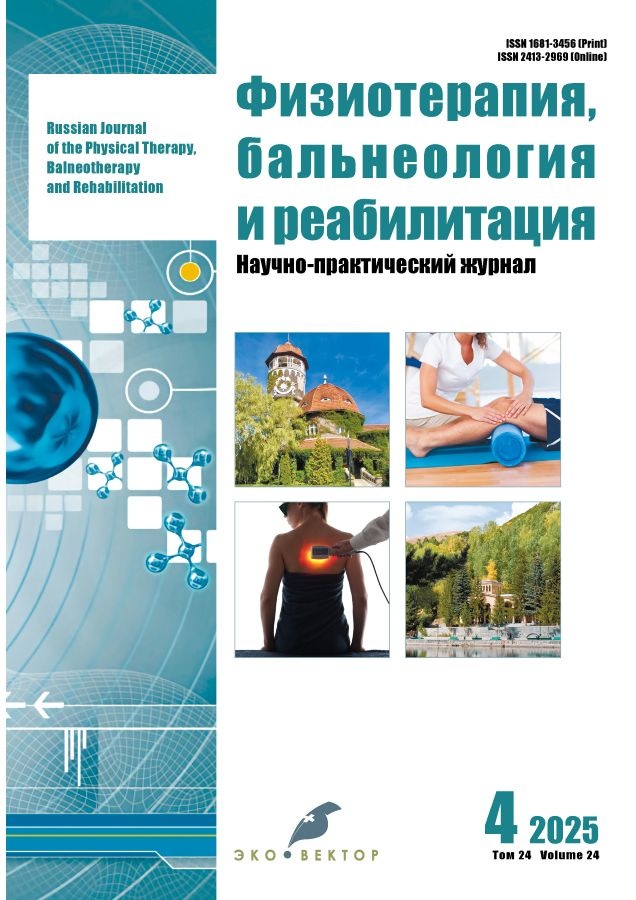基于足底压力图的偏瘫型脑瘫患儿步态特征
- 作者: Kovalchuk T.S.1, Laisheva O.A.1,2, Vedernikov I.O.1, Andreev A.D.1, Noskov A.V.2
-
隶属关系:
- Russian Children’s Clinical Hospital — Branch of the Pirogov Russian National Research Medical University
- The Russian National Research Medical University named after N.I. Pirogov
- 期: 卷 24, 编号 4 (2025)
- 页面: 280-294
- 栏目: Original studies
- ##submission.datePublished##: 16.08.2025
- URL: https://rjpbr.com/1681-3456/article/view/678231
- DOI: https://doi.org/10.17816/rjpbr678231
- EDN: https://elibrary.ru/EDCNHN
- ID: 678231
如何引用文章
详细
论证。偏瘫型脑瘫(cerebral palsy, CP)患儿通常表现出显著的运动不对称性及患侧下肢支撑功能障碍。尽管目前已有多种评估步态障碍的方法,但能够准确反映偏瘫型脑瘫患儿步态特征的定量参数仍研究不足。足底压力图(pedobarography)作为一种现代化的仪器检查手段,可详细分析足底压力分布特征,获取步态的时间与空间参数,评估负重对称性,并识别步态中的原发性与继发性异常。
目的。评估足底压力图在偏瘫型CP患儿中的应用价值。
材料与方法。本研究为观察性、单中心、回顾性、全样本研究。研究在Russian Children’s Clinical Hospital, Pirogov Russian National Research Medical University)儿童康复医学科开展,共分析了2021年11月至2024年12月期间86份确诊为偏瘫型脑瘫、初诊时完成的6–16岁患儿足底压力图检查报告。
结果。明确了在偏瘫型CP患儿中具有临床意义的关键足底压力图参数指标。
结论。足底压力图检查结果可为制定针对该人群的差异化康复方案提供客观依据,旨在改善运动功能、优化静态和动态参数,并预防偏瘫型脑瘫患儿继发性功能障碍的发展(如患侧下肢关节活动受限,继而出现关节畸形、骨盆结构移位和脊柱侧弯等)。
全文:
作者简介
Timofey S. Kovalchuk
Russian Children’s Clinical Hospital — Branch of the Pirogov Russian National Research Medical University
编辑信件的主要联系方式.
Email: tim-kovalchuk@yandex.ru
ORCID iD: 0000-0002-9870-4596
SPIN 代码: 2067-7912
俄罗斯联邦, Moscow
Olga A. Laisheva
Russian Children’s Clinical Hospital — Branch of the Pirogov Russian National Research Medical University; The Russian National Research Medical University named after N.I. Pirogov
Email: olgalaisheva@mail.ru
ORCID iD: 0000-0002-8084-1277
SPIN 代码: 8188-2819
MD, Dr. Sci. (Medicine), Professor
俄罗斯联邦, Moscow; MoscowIgor O. Vedernikov
Russian Children’s Clinical Hospital — Branch of the Pirogov Russian National Research Medical University
Email: pulmar@bk.ru
ORCID iD: 0009-0006-1327-2525
SPIN 代码: 5047-2594
俄罗斯联邦, Moscow
Alexander D. Andreev
Russian Children’s Clinical Hospital — Branch of the Pirogov Russian National Research Medical University
Email: alex10_97@mail.ru
ORCID iD: 0000-0002-2655-1615
俄罗斯联邦, Moscow
Alexander V. Noskov
The Russian National Research Medical University named after N.I. Pirogov
Email: parter1997@mail.ru
ORCID iD: 0009-0004-4878-1026
俄罗斯联邦, Moscow
参考
- Guzik A, Drużbicki M, Kwolek A, et al. The paediatric version of Wisconsin gait scale, adaptation for children with hemiplegic cerebral palsy: a prospective observational study. BMC Pediatrics. 2018;18(1):301. doi: 10.1186/s12887-018-1262-4
- Prevalence of specific gait abnormalities in children with cerebral palsy. Dev Med Child Neurol. 2016;58(8):798–805. doi: 10.1111/dmcn.13111
- Changes in foot posture evaluated with dynamic pedobarography in children with cerebral palsy. J Pediatr Orthop. 2024;44(1):19–27. doi: 10.1097/BPO.0000000000002001
- Which gait training intervention can most effectively improve gait ability in children with cerebral palsy? Front Neurol. 2023;14:9871496. doi: 10.3389/fneur.2023.9871496
- Spatiotemporal characteristics of gait when walking on an uneven surface: A comparative study of healthy children and children with cerebral palsy. Gait Posture. 2025;98:45–53. doi: 10.1016/j.gaitposture.2025.03.001
- Pedobarographic evaluations in physical medicine and rehabilitation for children with hemiparetic cerebral palsy. Phys Med Rehabil Clin N Am. 2023;34(2):289–302. doi: 10.1016/j.pmrj.2023.01.007
- Advances in pedobarographic techniques for assessing asymmetry in gait patterns among pediatric patients with cerebral palsy (2020–2024). Clin Gait Analysis. 2025;12(4):45–60.
- Dynamic pedobarography as a tool for optimizing therapeutic interventions in pediatric CP patients undergoing gait training programs (2023). Pediatr Rehabil Med. 2023;29(2):99–108.
- Comparative outcomes of pedobarographic versus traditional gait analysis methods among pediatric patients with CP undergoing surgical correction procedures (2019–2025). Pediatr Orthop Surg. 2025;40(1):15–25.
- Longitudinal changes in foot dynamics and pressure distribution among pediatric patients with CP treated using advanced pedobarographic systems (2018–2025). J Orthop Res. 2025;43(1):12–20.
- Biomechanical analysis of asymmetry in gait parameters among hemiparetic CP patients using pedobarographic technologies (review). Biomech Clin Appl. 2022;33(4):55–66.
- Monitoring method of functional restoration of unstable ankle joint injuries using pedobarography (2022). Clin Biomech. 2022;91:105–112.
- Perry J, Burnfield JM. Gait analysis: Normal and pathological function. 2nd ed. Thorofare: SLACK Incorporated; 2010.
- Studenski S, Perera S, Patel K, et al. Gait speed and survival in older adults. JAMA. 2011;305(1):50–8.
- Rosenbaum D, Becker HP. Plantar pressure distribution measurements: Technical background and clinical applications. Foot Ankle Surg. 1997;3(1):1–14.
- Simon SR, Mann RA, Hagy JL, et al. Quantitative analysis of human gait using a force plate and computer system: A study of normal and pathological gait patterns in children with cerebral palsy and adults with hemiplegia following stroke rehabilitation therapy interventions over time (1973). J Biomech Eng Trans ASME. 1973;95(4):287–94.
- Whittle MW. Gait analysis: An introduction. 4th ed. Oxford: Butterworth-Heinemann; 2007.
补充文件










